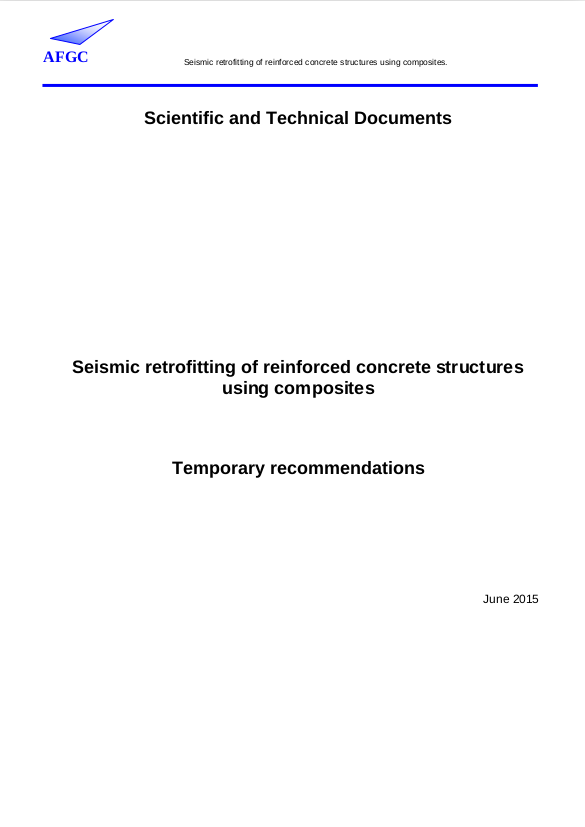
Seismic retrofitting of reinforced concrete structures using composites
Février 2015
In various countries, including France, the regulations concerning buildings and civil engineering structures contain recommendations aimed at achieving acceptable seismic performance, that is, the structures designed must withstand minor earthquakes without damage, moderate earthquakes with minimum non-structural damage and major earthquakes without collapsing. The seismic recommendations proposed in building regulations...
In various countries, including France, the regulations concerning buildings and civil engineering structures contain recommendations aimed at achieving acceptable seismic performance, that is, the structures designed must withstand minor earthquakes without damage, moderate earthquakes with minimum non-structural damage and major earthquakes without collapsing. The seismic recommendations proposed in building regulations have thus been updated over the years to achieve this aim.
In France, the new earthquake zone map and changes in the regulations as a result of Eurocode 8 (EC 8) have contributed to defining the performance objectives of new structures. For existing structures, at least in certain cases, reinforcement is required to reduce seismic risks. This notion is introduced in Eurocode 8 Part 3 and in the implementing decrees and orders. Seismic retrofitting can therefore be either voluntary or compulsory. Based on the current construction rate, it would take one hundred years to completely replace France’s housing stock. Seismic retrofitting of existing structures therefore appears necessary to ensure the solidity of all building constructions and the safety and security of people and property.
This document presents recommendations for the seismic retrofitting of concrete structures using fibre-reinforced polymers(FRP)
His aim is to provide in-depth information on the use of materials for the seismic retrofitting of existing structures. These guidelines are a complement to existing guidelines on earthquake engineering.
Date de publication
Février 2015
Nombre de page
132
Langue
Anglais